How to Socialize an Aggressive Dog
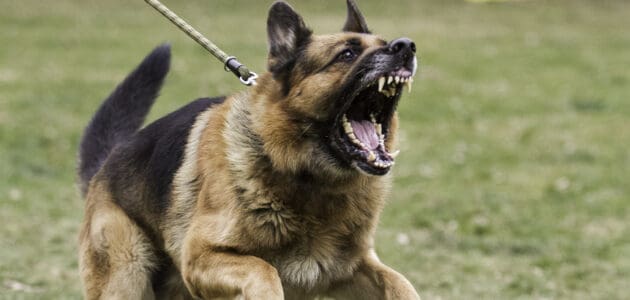
Caring for an aggressive dog can be stressful, heart-breaking, and utterly exhausting. Every day you’re weighed down by the dread that their aggression will get out of hand, with the possibility that your pet will hurt someone or another pet. Even a simple walk around the block can feel like navigating through a battleground, with things that could trigger an aggressive response at every turn.
At times, you might feel like your dog is a lost cause, and nothing you do will change their unruly behavior. However, don’t give up hope. There are no untrainable dogs, and there are many ways to help dogs overcome their aggression, with one of the most effective being socialization.
What Is Dog Aggression?
Before we delve into what exactly socialization is, we’ll first briefly define dog aggression. Aggression is one of the most common behavioral issues dogs suffer from. It is hostile behavior, like snarling, snapping, lunging, and biting, typically directed at a person or another animal.
Although an aggressive dog’s outbursts may seem to happen suddenly, there are usually warning signs beforehand. If these warning signs aren’t effective, or are misunderstood, that’s when they resort to hostile behavior. Keep in mind that many of these traits are actually desirable in some ways, signaling loyalty and a willingness to protect you and your family. With that in mind, it’s easier to understand this aggression is not your fault, nor is it your dog’s fault. Instead, focus on the fact that socializing your dog is about emphasizing positive behaviors and eliminating negative ones.
We cover more about aggression, such as the many types and causes, at the end of this guide.
Socialization is the process of helping your dog become acclimated to the world around them. It involves teaching them to feel at ease in different environments, as well as to interact with other people and animals.
Socializing an aggressive dog entails helping them to become more comfortable, specifically with the things that spark their aggression (triggers). To do this, you will need to first determine your dog’s triggers, then change their perspective of them through a process of desensitization and counter-conditioning. If you’re unfamiliar with these terms, don’t worry, we’ll be explaining them in detail a little later on!
Determine the Trigger(s)
Every aggressive dog has different triggers, with most having several. Common triggers include strangers, unfamiliar clothing, other animals, vehicles, and being handled.
Some triggers will bring out more severe reactions than others. Characteristics of the trigger itself can also play a part in how severe of a response it gets; your dog may growl at a stationary bicycle, but lunge and snap at a moving one.
It’s vital you pinpoint exactly what your dog’s triggers are and how they handle each one. If you’re struggling to figure out your dog’s triggers, it’s a good idea to keep a diary and write down the moments when your dog has shown aggression. Note the events that took place before, during, and after. This will really help you deduce your dog’s triggers, as you’ll likely spot patterns that emerge. Think about the triggers themselves, the people or animals involved, and the time of day.
Desensitization
Once you’ve identified the triggers, you can now start to desensitize your dog to them. Desensitization is the process of gradually exposing your dog to their triggers in a manner that doesn’t seem threatening or intimidating. This helps your dog to realize that there’s nothing to be afraid of, that you and your pet are safe around these triggers, and their aggressive response is not needed.
To set your dog up for success, you will need to tackle their mildest trigger first. Trying to get your dog comfortable with their most severe trigger straight away will likely prove futile, as they’ll be too riled up to pay any attention to you.
Moreover, you will need to initially expose your dog to each trigger in the way that’s least likely to stress them out. If you don’t start small, you may make their fear of the trigger (and thereby their reaction) worse. For example, imagine you had a phobia of bees. If someone decided to put you in a room with a dozen bees’ nests, you wouldn’t be thinking, hey, my friend was right, they aren’t that bad! Instead, you’d be completely overwhelmed with panic, and after the traumatic ordeal, you’d probably have never-ending nightmares about bees.
In fact, the exposure above is called flooding, and it’s been proven time and time again to be an ineffective and dangerous way of managing unwanted behavior in dogs.
If your dog’s trigger is people wearing hats, here is how you would effectively carry out the desensitization process:
- First, expose your dog to someone who you know and trust, wearing a hat from a tolerable distance away (the distance at which your dog doesn’t react negatively).
- Slowly decrease the distance. If your dog starts acting uncomfortable, increase the distance until they’re at ease again.
- Repeat this process over several sessions. Over time, your dog will become comfortable with the person being nearby.
- Once your dog has reached the stage above, introduce small interactions, such as talking and brief-eye contact. Increase or lessen interaction based on your dog’s reaction.
- Continue until your dog doesn’t react to the hat-wearing person interacting with you in close proximity.
- If their aggression is elevated when movement or sound is involved, you will need to desensitize them to these aspects as well. Sometimes a trigger has multiple components.
This process may take several weeks or even several months. Every dog is different, so patience is key. Don’t rush your dog or snap at them if you get frustrated, as this could make them more anxious around the trigger.
Counter-Conditioning
Counter-conditioning involves changing your dog’s negative perception of a trigger into a positive one. This is achieved by encouraging them to associate the trigger with a pleasurable experience. The easiest way to do this is to give your dog treats every time they encounter the trigger.
Counter-conditioning often goes hand in hand with desensitization, and for best results it’s crucial you do both at the same time. For example, whenever you expose your dog to their trigger during the desensitizing process, you should give them tasty treats.
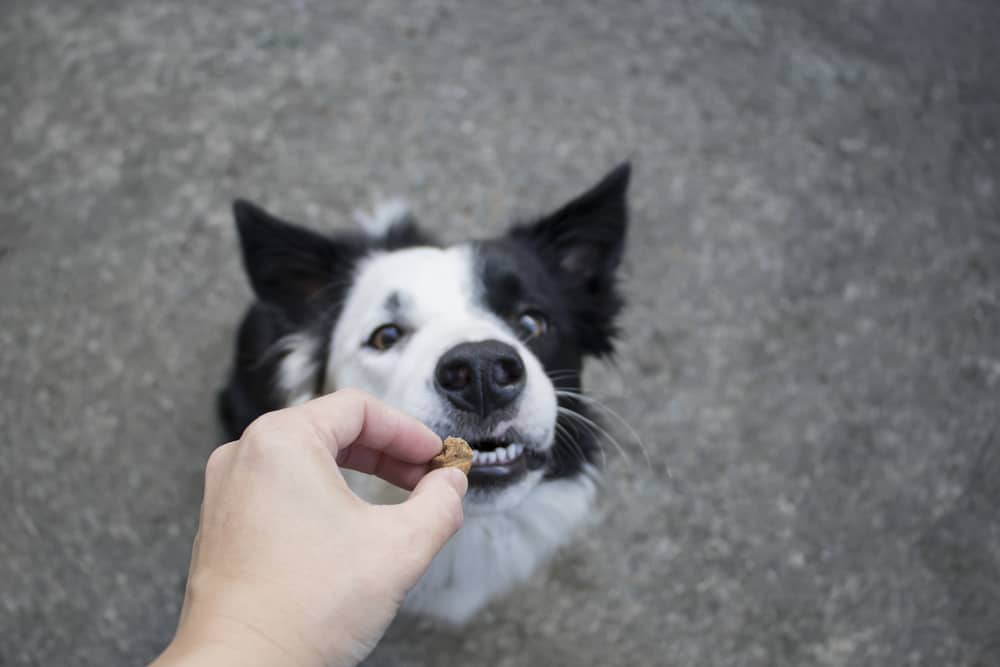
Additional Tips
Make sure to only reward them when they have seen the trigger and are calm and focused on you. If you give them treats when they are reacting aggressively toward the trigger, you are actually rewarding their hostility, ultimately reinforcing it.
Plus, if your dog hasn’t spotted the trigger beforehand, they may associate receiving those treats as something that leads to their trigger appearing, making them scared of the treats.
It’s important you don’t show fear or stress in response to your dog’s aggressive behavior. This will simply reinforce your dog’s perspective that the thing they’re reacting to is threatening.
Response Substitution
Response substitution involves giving your dog a more desirable behavior to practice instead of the unwanted, aggressive behavior. For example, you could focus on getting them to sit when they see the trigger, and once they sit, you would then reward them with treats.
Keep in mind in most cases it’s best to start with desensitization and counter-conditioning before you try response substitution. Response substitution should not be a replacement, as it changes your dog’s behavioral response, not their actual emotional response. Put simply, it won’t really change your dog’s perception of the trigger, so using it by itself may prove ineffective at tackling their aggression.
How to Tell if Your Dog Is Comfortable Around Their Trigger
As we mentioned earlier, dogs tend to exhibit warning signs before lashing out. These include tenseness, trembling, and tail tucking. If your dog isn’t displaying these signs, and appears confident, it’s likely that they are feeling comfortable around their trigger.
That said, it’s vital you seek guidance from a trained professional rather than solely relying on your own intuition; it can be difficult to read a dog’s body language, and misunderstanding how your dog is feeling can have serious consequences. We go over more reasons why in many cases seeking professional help is a good idea down below.
Another telltale sign is if your dog is looking at you in anticipation of treats (expecting something positive). If you’ve successfully taught them a more desirable behavior, your dog will also be practicing this behavior upon seeing their trigger.
Ensuring Safety
For safety, it’s crucial you have full control over your dog during socialization sessions; stick to a short leash and a durable harness. Avoid long leashes, especially retractable types!
If your dog’s aggressive behavior entails biting, make sure they’re wearing a muzzle when facing their triggers. For a guide on how to muzzle train your dog, click here.
Make sure the muzzle fits your dog comfortably; it should never be a source of discomfort or pain. While there are several types of muzzles, we recommend sticking to a basket muzzle, as it will allow your dog to pant, take treats and drink with ease. Ideally, that muzzle can be removed eventually after your dog is trained.
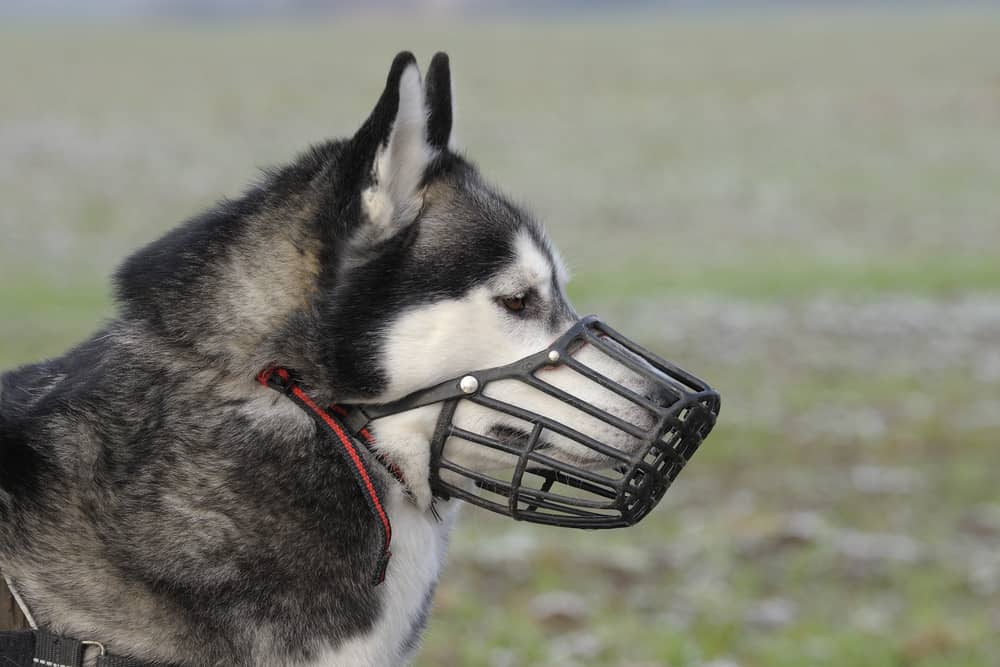
Even if your dog seems completely comfortable around their trigger, it’s important you repeat the socialization process at least once a month. This will prevent them from becoming sensitized again and going back to their old behavior.
Never try to combat all your dog’s triggers in one go; exposure to trigger after trigger (trigger stacking) will overwhelm them and worsen their aggression. This is a process, and it’s not a race.
If your dog’s aggression is severe, it’s a good idea to supplement their socialization with anxiety-relieving medication. However, you should always speak to a veterinarian about medication.
Here, we’ll go over all the things you should take into consideration before attempting socialization. This will give your dog the best chance of overcoming their aggression.
Seeking Help
We can’t stress this point enough: if you have a very aggressive dog, you must seek help from a professional, such as a Certified Applied Animal Behaviorist (CAAB) or a Veterinary Behaviorist. They will be able to work with you and ensure you’re going about socialization the right way and at the right pace.
They will also be able to deduce if socialization is the best treatment for your dog’s aggression – some aggressive behavior may call for different measures. We go over the many types of aggression a little further down.
When considering a behaviorist, make sure you pick one that uses positive reinforcement, and has lots of experience with aggressive dogs. For more guidance on finding professional help, check out WebMD’s in-depth guide.
It’s also a good idea to take your dog to a veterinarian first to check there’s no underlying health issue behind their behavior. Sometimes dogs behave aggressively because they’re uncomfortable or in pain.
Managing Environment
Your dog should not be coming into contact with their trigger outside of their socialization sessions, as you won’t be able to adequately control the situation. If your dog has a negative experience with their trigger, it could sensitize them to it once more, thwarting any progress you’ve made so far.
While it’s not always possible to avoid their triggers, there are some measures you can take to reduce the chance of it happening.
Measures to Take
Be vigilant during walks; look out for potential triggers, and keep an eye on your dog’s body language.
Avoid walking your dog during busy times, and if you do spot something that will trigger them in the distance, walk away in the opposite direction.
When guests visit, ask them to keep their voices low, and keep your dog in another room. Ensure that the room is a fun and stress-free place for them; fill it with mentally-stimulating toys and tasty treats. Even calming music can help/
Put up blinds or use window film to block your dog’s vision of the outside. This will prevent them from seeing things that could trigger them.
If your dog’s trigger is children, keep them away from areas where kids are likely to be, and do not have kids around the house.
Basic Obedience Training
Reward-based obedience training can really lessen a dog’s aggressive behavior. This is due to several reasons; it tires them out, helps them to develop more self-control, and strengthens the bond you share.
It also teaches your dog that following your instructions will lead to good things (like treats!), which ultimately makes them more inclined to trust your judgment around their triggers.
Plus, once your dog responds to commands, you can potentially use these commands to manage their aggression. For example, if you notice your dog focusing on their trigger, you can use the command “watch me” to redirect their focus. If your dog is a resource guarder (more on this below), you can use “leave it” to get them to drop what they’re guarding.
If you need help with obedience training, we recommend browsing the American Kennel Club’s (AKC) training guides.
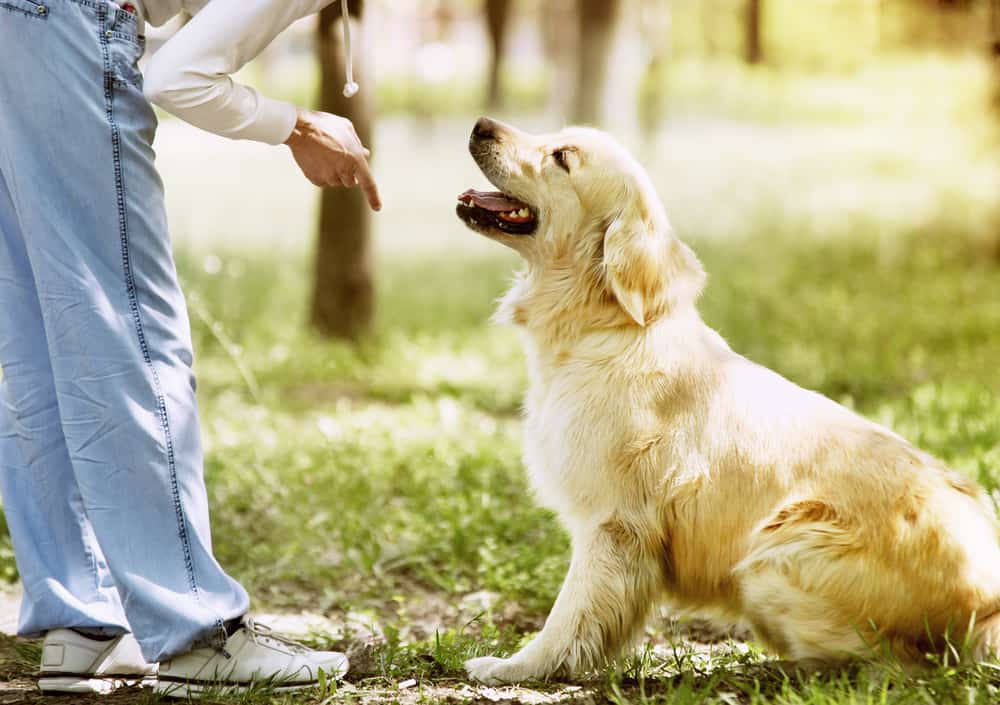
Ensure Core Needs Are Met
If you’re hoping to tackle aggressive behavior, it’s vital you ensure your dog is getting enough exercise and mental stimulation throughout the day; a happy and tuckered out dog is less likely to be on edge. Some form of routine in your dog’s day-to-day life is also crucial, since consistency and predictability can further help them to feel at ease.
Another thing to consider is diet. If you’re not feeding your dog an appropriate amount, it can increase their irritability, making them more prone to aggression.
What Causes Aggression?
When a dog is aggressive, it’s typically because they have learned, through experience, that aggression is an effective way to deal with unpleasant situations. For example, a dog fearful of strangers will be aggressive toward them if in the past it has worked to keep them away.
Proper socialization and obedience training during puppyhood can reduce the risk of dog aggression immensely; not only does it teach a dog appropriate ways to overcome unpleasant situations, it also helps to reduce the number of things they perceive as threatening.
However, that’s not to say that environment is the sole factor, and that genetics don’t play a part. Dogs with aggressive or fearful parents are more likely to exhibit the same behavior. Inbreeding can also increase the risk of behavioral problems, and unneutered males tend to be more aggressive. Breeds traditionally used as guard dogs can be difficult to socialize and more prone to antisocial behaviors as well.
Aggression can also be caused by an underlying medical condition, especially if the aggression has emerged suddenly.
Types of Aggression
Fear-related, resource guarding, territorial – there are many types of aggression. An aggressive dog may exhibit one or several forms of aggression. To combat your dog’s behavior, it’s critical you identify which form or forms of aggression your dog has. Here, we’ll go over the most common ones. When noticing patterns with your dog’s aggression, see if they fall under one group. This will help give you a better understanding of how your dog groups threats and enable you to socialize your dog more effectively.
Fear Aggression
When a dog is frightened of something, their “flight or fight” response is triggered. If they’re unable to escape the situation (flight), they may resort to aggression (fight) to defend themselves from the perceived threat.
A dog can be fearful of other animals, people, things, or certain environments. What they’re fearful of is typically things they weren’t exposed to as a puppy.
Fear is the most common cause of aggression in dogs. Keep in mind that many other types of aggression can be motivated by fear as well, like territorial aggression.
Territorial Aggression
A dog with territorial aggression will react aggressively to unfamiliar people or other animals approaching the house. This aggression stems from a dog’s urge to protect their territory (their home) from perceived intruders. If guarding behavior has been encouraged in the past, territorial aggression is much more likely to occur.
Frustrated Aggression
Just like toddlers, dogs can get easily frustrated if they aren’t able to get what they want. If a dog has not been taught ways to self-control and regulate, or they’ve learnt aggression gets them what they want, that’s when their frustration can manifest as hostile behavior.
Resource Guarding
In the wild, dogs had to protect their resources from others to survive. This survival instinct is present in every dog, but for some, the desire to guard resources can be overwhelming. This can lead them to act aggressively when someone tries to take away something they deem valuable, like their food bowl.
Conflict Aggression
Conflict aggression is the term for aggression directed toward familiar people or animals. It typically arises from conflict situations. For example, a dog may resort to aggression if they’re uncomfortable with their owner’s actions, especially if it’s the only behavior their owner responds to.
Unsurprisingly, many types of aggression, like resource guarding, can also be considered a form of conflict aggression (if toward familiar people).
Dogs are more likely to exhibit conflict aggression if their owners do not provide clear instructions (miscommunication causes confusion and stress), and aren’t consistent in their interactions – you might encourage your dog to get up on the couch one day, then the next day tell them off for attempting to jump up on the couch.
Conflict aggression was formerly called “dominance aggression” and was linked to a dog’s desire to assert dominance over their owner (status-based). However, recent studies have shown that the desire for dominance is rarely the cause.
Other types of aggression include predatory aggression, pain-related aggression, and sexual aggression.
How You Shouldn’t Tackle Dog Aggression
In the past, correction and the use of aversives (like prong collars) were seen as the surefire way to stop dog aggression. However, most behavioral experts now agree that these traditional methods aren’t as effective as positive reinforcement, and they can actually escalate a dog’s aggression, especially if their aggression stems from fear.
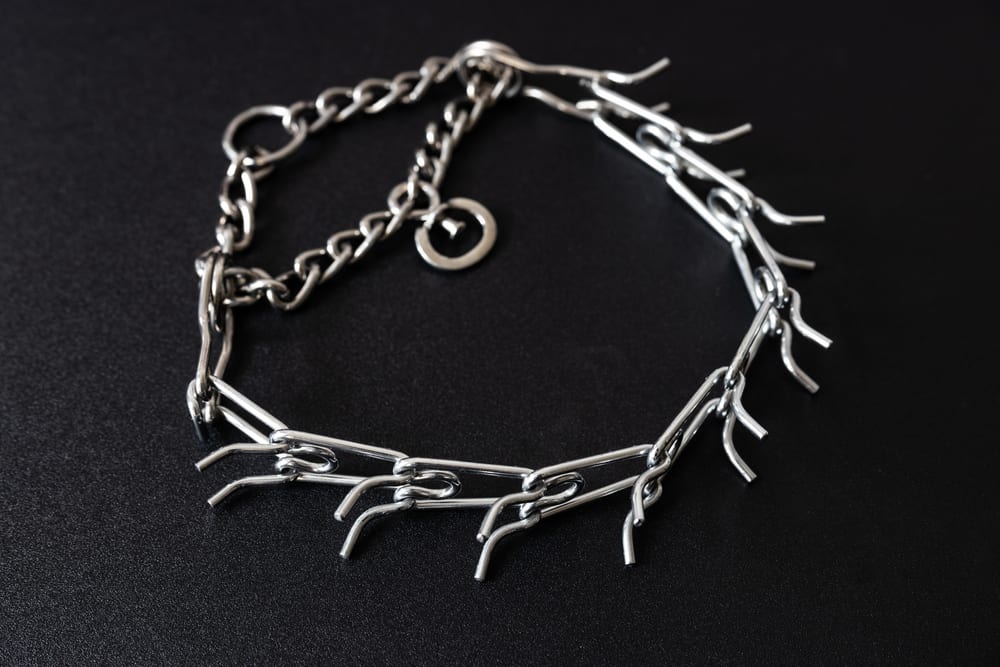
Even if punishment appears to work, your dog is only “obeying” out of fear. It hasn’t changed how they feel about the trigger. This means as soon as you stop punishing your dog, or if their fear of the trigger becomes greater than their fear of the punishment, they’ll likely revert back to their aggressive behavior.
When dealing with an aggressive dog, patience, a calm mindset, and positive reinforcement is the way to go.
Final Thoughts
If your dog is displaying aggressive behavior, it’s vital you act now and take measures to tackle their aggression. It will immensely benefit their wellbeing (and yours), and it’ll reduce the risk of them hurting others or themselves. Even if your dog’s aggression hasn’t yet escalated beyond growling, it may escalate in the future if it’s not dealt with early.
Socializing an aggressive dog takes time and dedication, and it can be a heck of a challenge. However, it is one of the best ways to help your dog overcome their aggression, as it deals with both their behavioral and emotional response.
Before you go, please remember that you don’t have to (and shouldn’t) battle your dog’s aggression alone. Enlist the support of professionals. They’re there to guide you through the process and will help your dog succeed.




